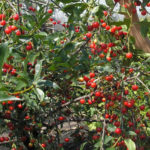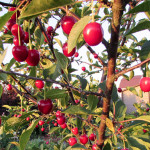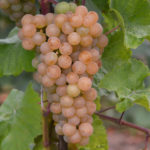Honeysuckle Variety Violet
Violet is a medium-late ripening honeysuckle, bred at the Pavlovsk experimental station VIR (St. Petersburg) through free pollination of seeds of the Roxana variety. The work on variety study, reproduction and introduction into production was carried out at the Krasnokutsk experimental station of the Institute of Horticulture of the UAAS (Krasnokutsk, Kharkov region, Ukraine). The authorship is assigned to M.N. Plekhanova, A.V. Kondrikova and V.A. Kikbalo. In 1992, the variety was sent to the State test. In 1995 it was zoned for the North-West region (Leningrad region), later - for all regions of the Russian Federation. The variety is recommended for cultivation in Poltava, Sumy and Kharkiv regions.
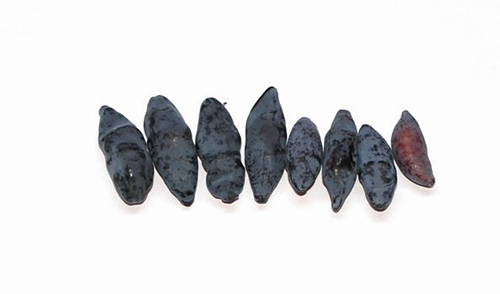
The bushes are medium-sized (up to 1.3 - 1.5 m in height), slightly spreading, with a dense rounded crown. Shoots are straight, thick, greenish-brown in color. The leaves are large, oblong-oval, bright green. The leaf blade is flat. The flowers are medium-sized (up to 2 cm in diameter), pale green in color, collected in 2-flowered inflorescences.
Violet honeysuckle berries are large (average weight 1.14 g, maximum - up to 1.5 g, diameter - up to 1.2 cm, length - up to 2.8 cm), elongated jug-shaped, slightly curved, with a pointed tip and slightly hilly surface. The skin is thin, but firm, smooth, blue-violet in color, with a waxy bloom of medium intensity over the entire surface of the fruit. The pulp is tight, slightly fibrous, sweet and sour dessert taste, with a pleasant light aroma. On a 5-point tasting scale, the taste of the variety is estimated at 4.3 - 4.7 points (in 1996 - 5.0 points).
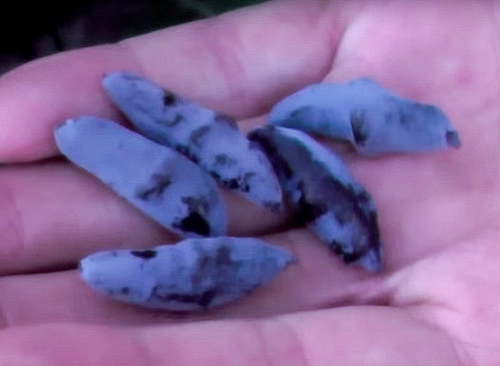
By chemical composition, fruits grown in Krasnokutsk contain: the sum of sugars (9.11%), acids (1.35%), vitamin C (69.2 mg / 100 g), P-active substances (637.2 mg / 100 g). The variety is suitable for processing and dessert use. The berries are transportable and do well in storage.
Under the conditions of Krasnokutsk, the berries ripen 2 - 3 days later than the Pavlovsk Experimental Station, in late May - early June; in the conditions of the Moscow region - in the 3rd decade of June (approximately on the 25th). Fruit shedding is weak.
The early maturity of Violet honeysuckle is good: the bushes bear fruit in the 3rd - 4th year of growth. The yield is estimated as average (but still higher than the level of many other varieties and forms of honeysuckle): 1.3 - 1.8 kg / bush. The variety is highly winter-hardy and resistant to diseases and pests. In the conditions of Central Russia, the bushes winter well, and the flowers do not suffer from spring frosts.
This honeysuckle is self-fertile. The following varieties are used as pollinators: Amphora, Viola, Blue Spindle, Moraine, Nymph.
In some years, secondary (autumn) flowering is observed. Shrubs are suitable for decorative purposes and can be used to create hedges.
Honeysuckle Violet grows well on many soils, but best of all on fertilized loamy and heavy loamy soils.
Among the main advantages of the variety: large berries with a dessert taste and a high content of vitamin C, low crumbling, frost resistance.
No significant shortcomings have yet been identified.

